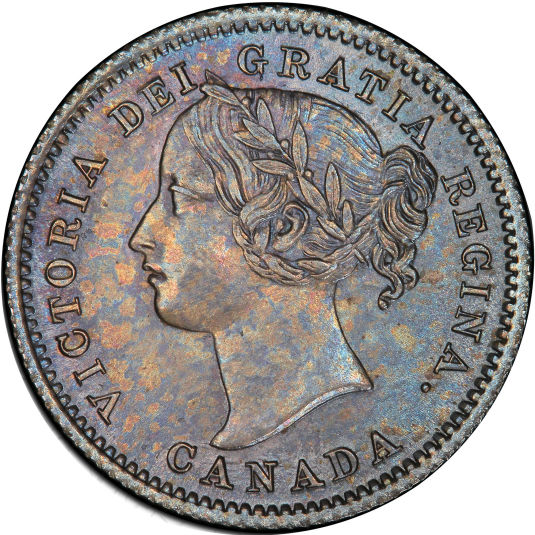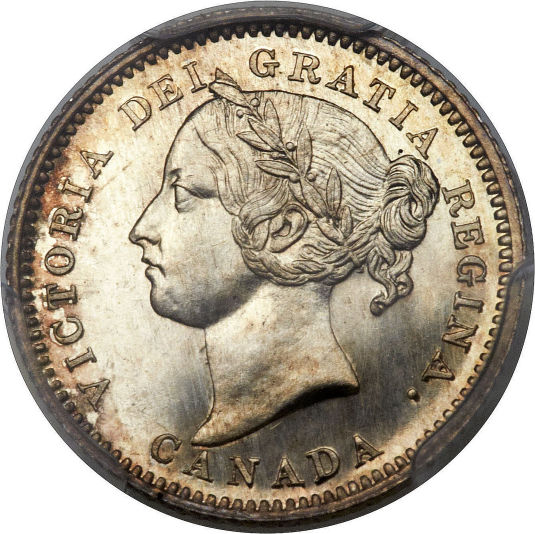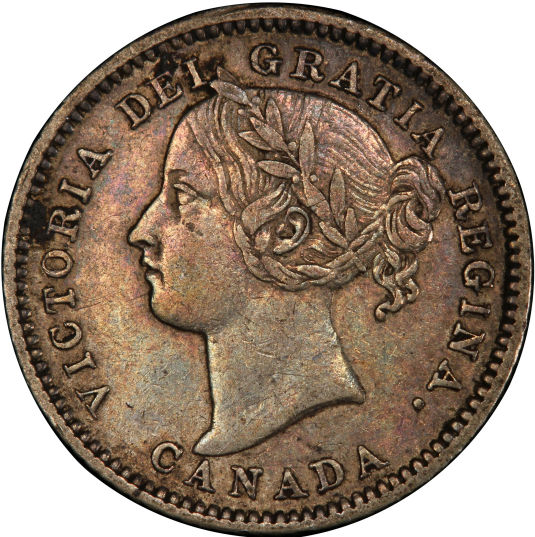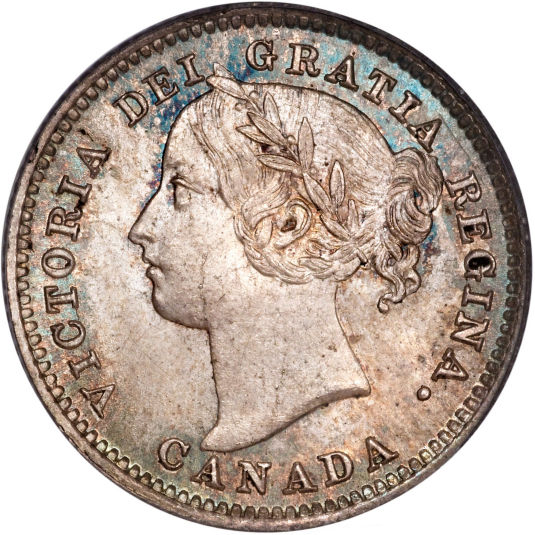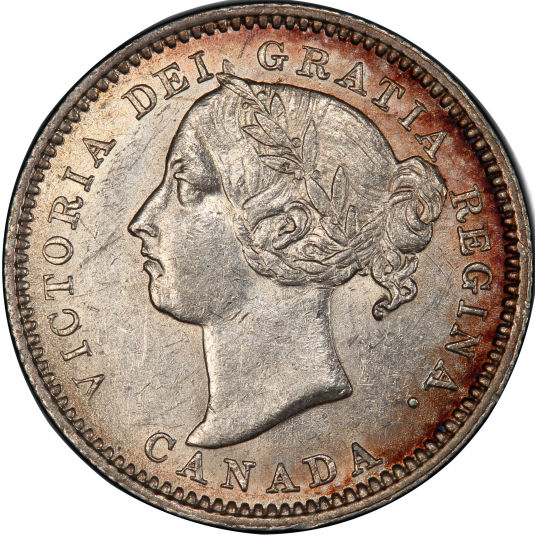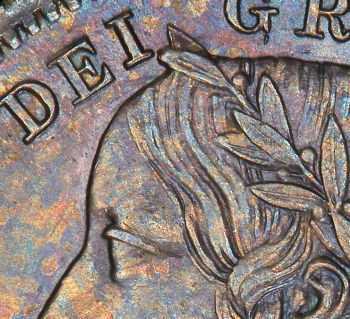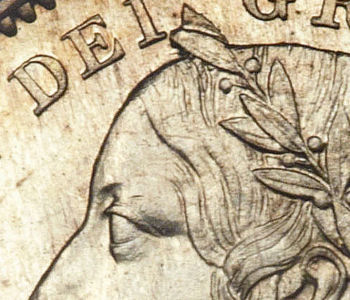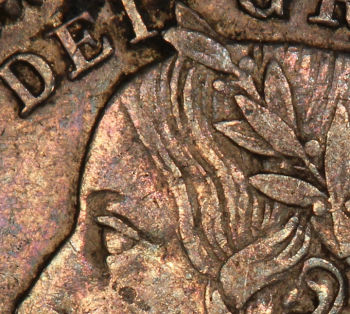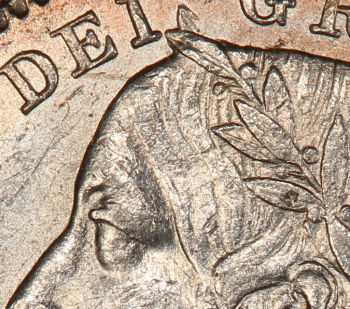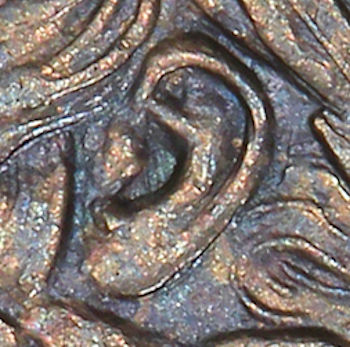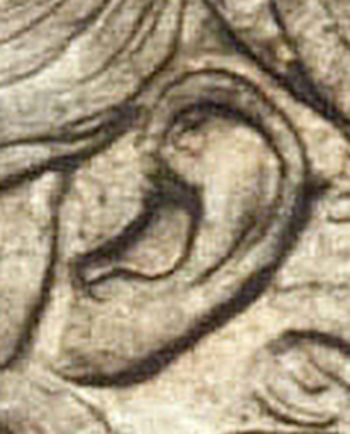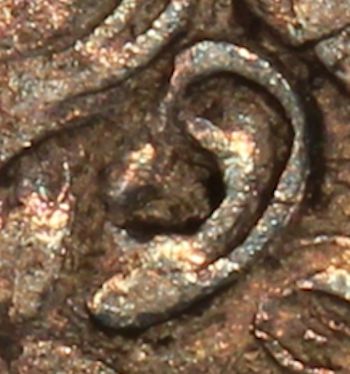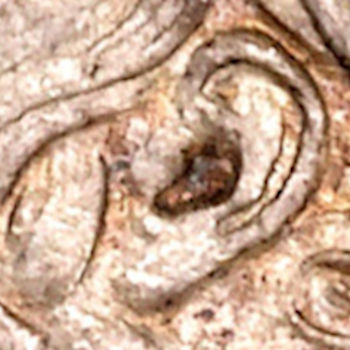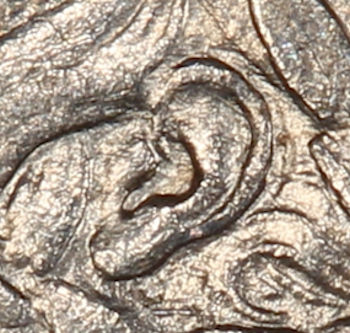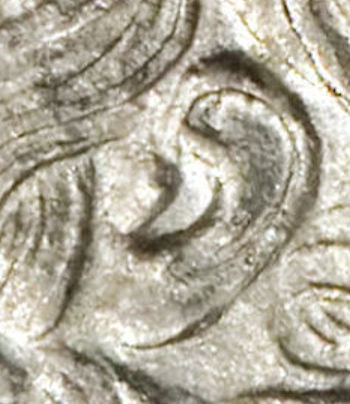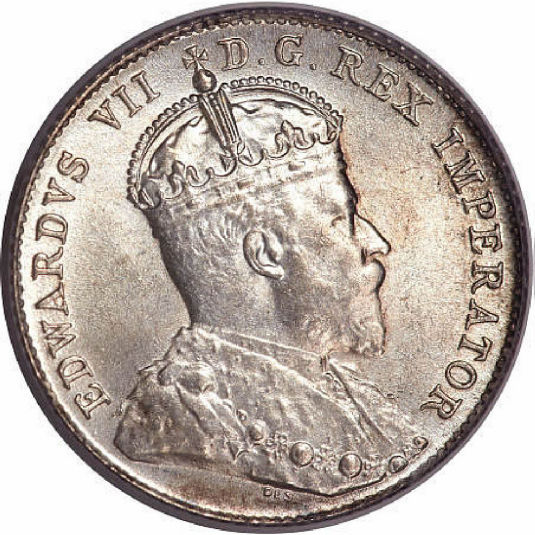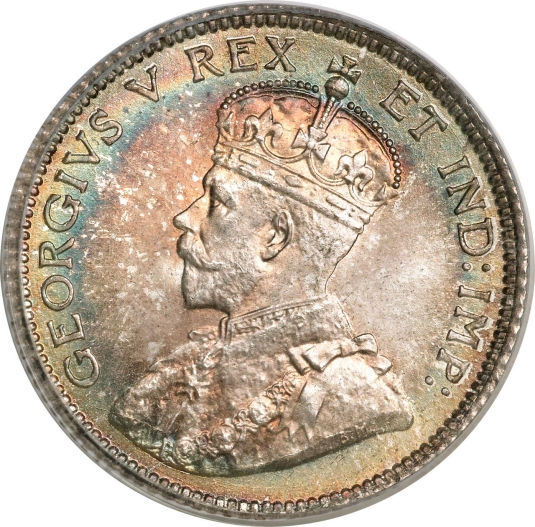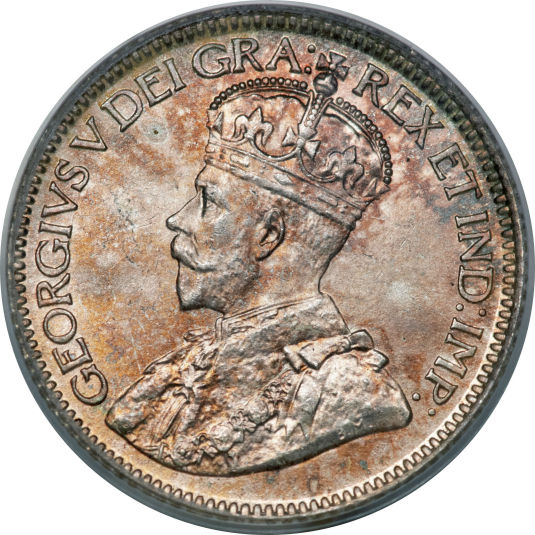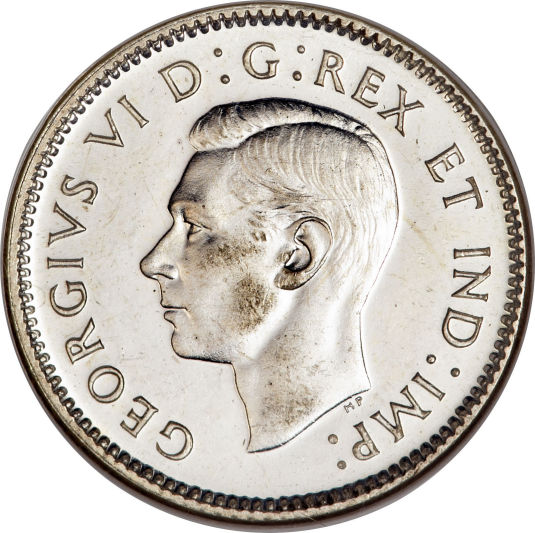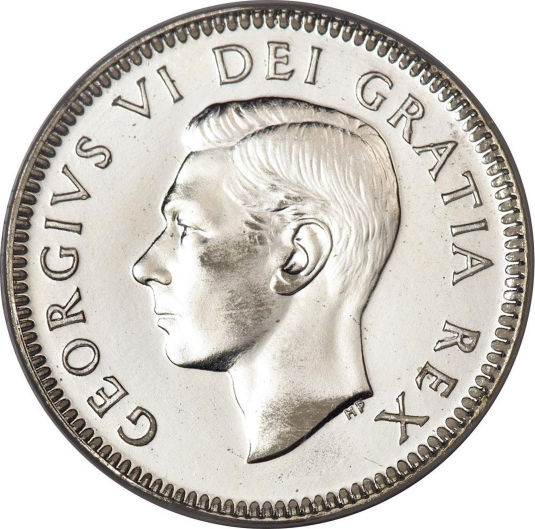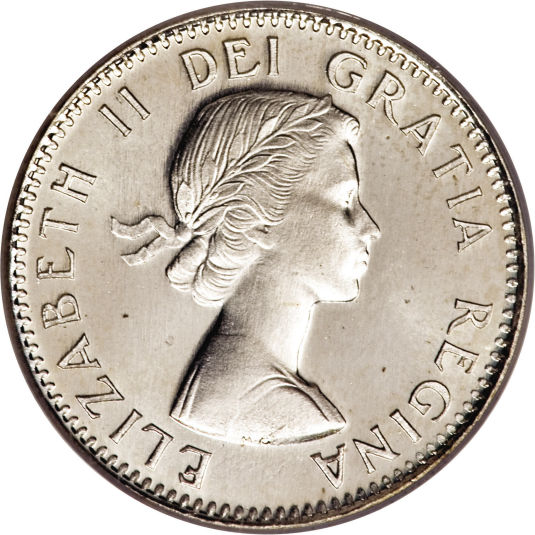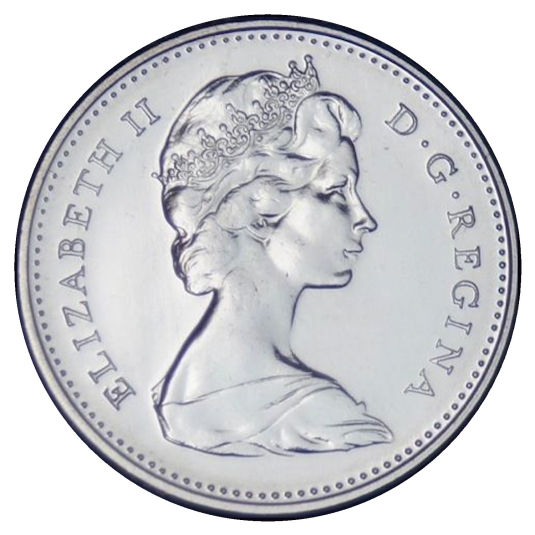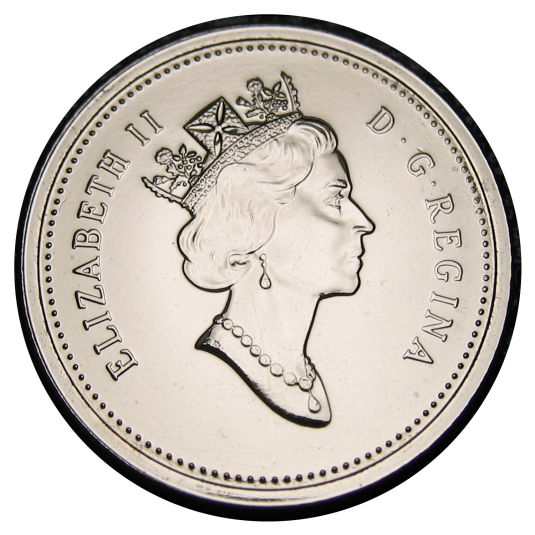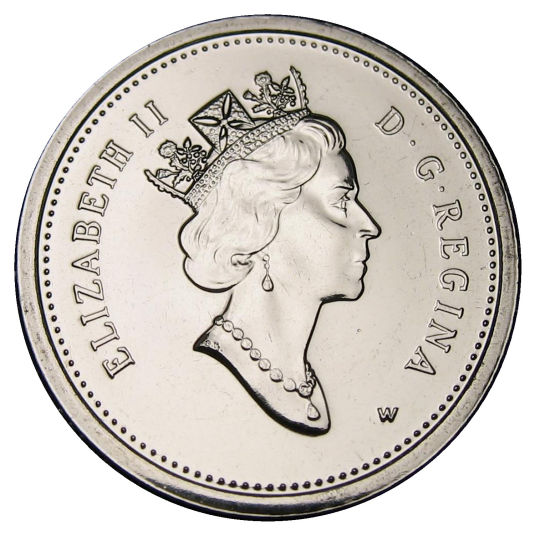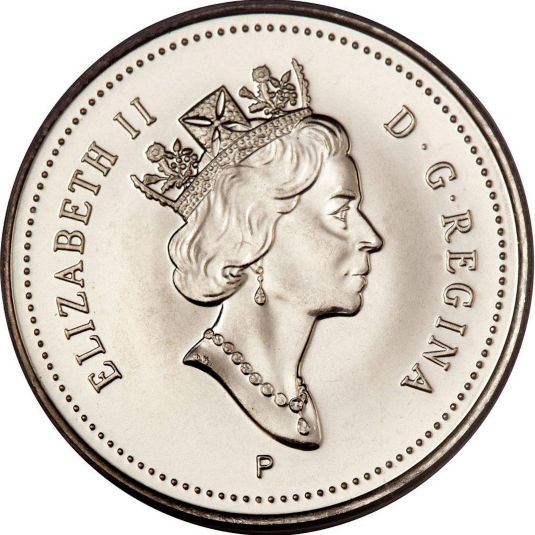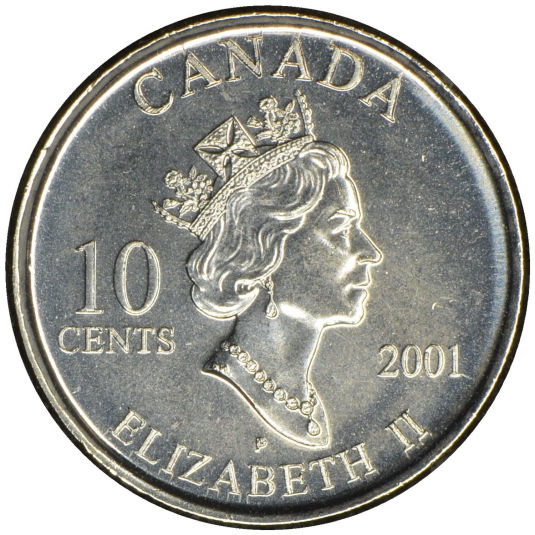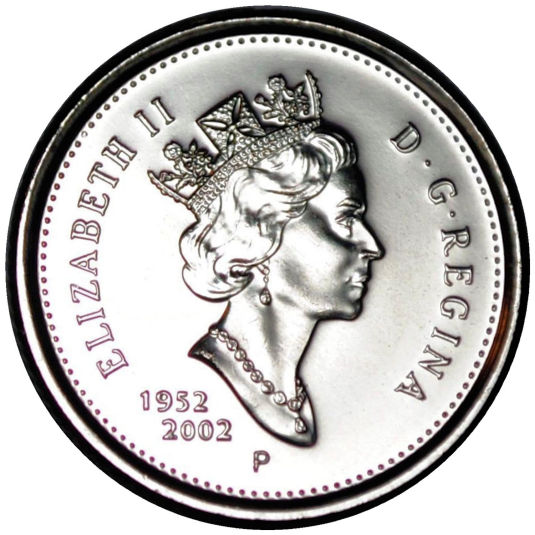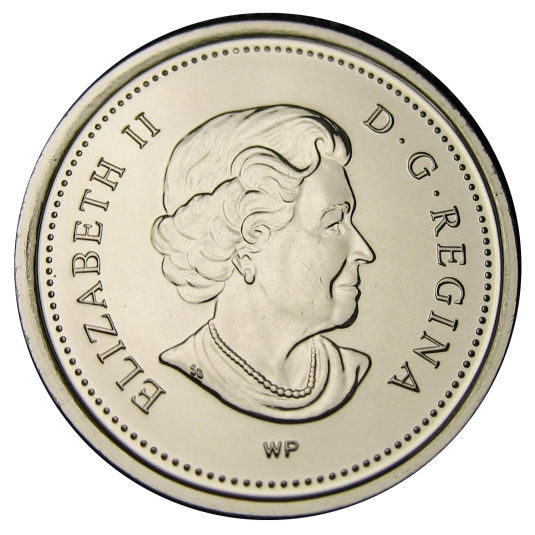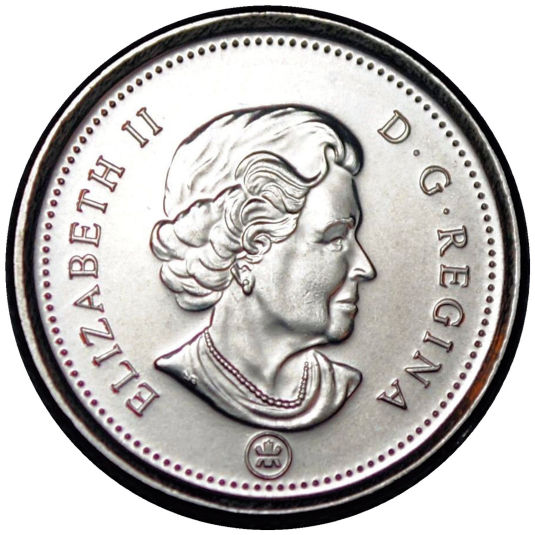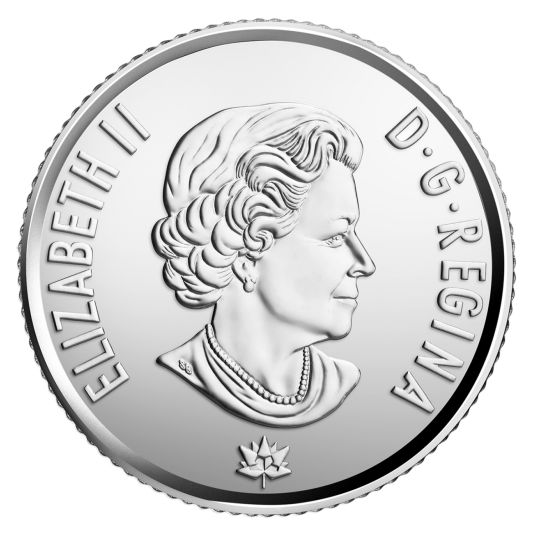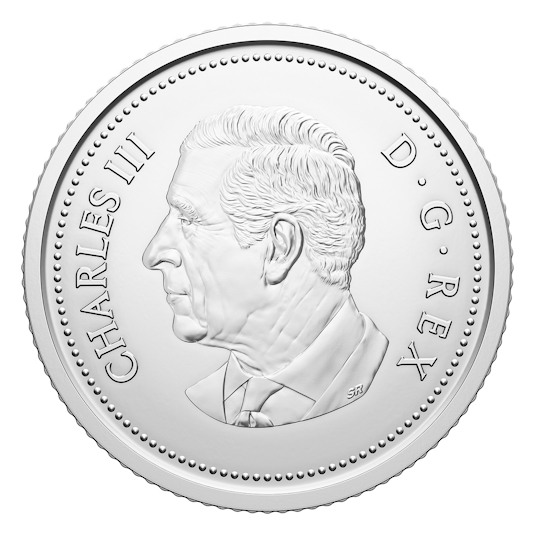Canadian Ten Cent Obverse Designs
|
This page shows the major die designs since Canadian coins were introduced in 1858. It does NOT cover "die blunders", where dies were re-punched
with different years (and the previous number is visible below the current number), or where cracks appeared in the dies causing unwanted lines
to appear in the coin. It also does not cover date doubling or special coins created for the collector market. All of the coin designs displayed here were
manufactured for general circulation as legal tender. NOTE: Click on any photo to load a much larger version of the same photo |
|||||||||||||||||||||||||||||||||||
|
|||||||||||||||||||||||||||||||||||
1858-1901
There are six different obverse varieties found on 10 cent coins between 1858 and 1901. Views of two key areas of the obverse for each variety can be found below the overall view section. NOTE: There is a GREAT obverse identification tool now available to collectors. Coins And Canada has created a page that lets you select two different obverse designs and compare them side by side using a slider. Click the following link to load the Victorian 1 cent page: Victorian 10 cent Obverse Comparison Tool |
|
Designed by Leonard C. Wyon, the portrait in left profile of Victoria is surrounded with the inscriptions "CANADA" and "VICTORIA DEI GRATIA REGINA" (Victoria, Queen by the grace of God) Victorian Obverse known as "OT1". The acronym is explained as follows: O = Obverse T = Ten cent 1 = Variant Type 1 |
|
Victorian Obverse known as "OT2". |
|
Victorian Obverse known as "OT3". |
|
Victorian Obverse known as "OT4". |
|
Victorian Obverse known as "OT5". |
|
Victorian Obverse known as "OT6". |
|
After the death of Edward VII, the coronation of George V in 1910 and the addition of India to the British Empire, a new obverse featuring King George V wearing the Imperal State Crown, surrounded by "GEORGVS V REX ET IND:IMP:" (George V King And Emperor of India) was designed by Sir E. B. MacKennal in 1911. To make room for the abbreviation "ET IND:IMP:" the words "D. G." (By the grace of God) and "IMPERATOR" from the previous obverse design were removed. |
|
When the public noticed that the "D.G." (meaning "By the Grace of God") had been removed from the coins of 1911 there was a tremendous amount of backlash over the "Godless" coins. As a result the obverse was changed in 1912 to add that text back onto the coins by the original designer Sir E. B. MacKennal. Important note: Production of ten cent coins was stopped after 1921, and was not resumed again until 1928. |
|
After the death of George V in January 1936, the abdication of Edward VIII and the coronation of George VI, a new obverse was designed by T. H. Paget with the likeness of King George VI (uncrowned), surrounded with the inscription "GEORGIVS VI D:G:REX ET IND:IMP:" (George VI, by the grace of God, King and Emperor of India). |
|
In 1948, India was granted independence from the British Empire. Because of this, the words "ET IND IMP" had to be removed from the obverse of all coin dies. Delays in the manufacturing of the new dies meant that a short term solution had to be found in order to produce the 1948 coins. A new production run was started using the 1947 dies, but to differentiate between the regular issue 1947 coins and the 1948 replacement coins, a Maple Leaf was added to the right of the date on all 1947 reverse dies. The corrected 1948 dies were not received until late in the year. For this reason very few 1948 coins were struck. Designed by Sir T. H. Paget, the portrait in left profile of George VI is surrounded with the inscription "GEORGIVS VI DEI GRATIA REX" (George VI, by the grace of God, King) |
|
After the death of George VI in February 1952, a new obverse was designed by Mary Gillick and Thomas Shingles with the likeness of Queen Elizabeth II when she was 27 years old, surrounded with the inscription "ELIZABETH II DEI GRATIA REGINA" (Elizabeth II, by the grace of God, Queen) uncrowned but wearing a laurel wreath. |
|
Designed by Arnold Machin, the portrait in right profile of Elizabeth II, when she was 39 years old, is surrounded with the inscription "ELIZABETH II D.G.REGINA" (Elizabeth II, Queen by the grace of God)
|
|
Designed by Arnold Machin and Myron Cook, the portrait in right profile of Elizabeth II, when she was 39 years old, is surrounded
with the inscription "ELIZABETH II D.G.REGINA" (Elizabeth II, Queen by the grace of God) The obverse dies were re-tooled slightly for the minting of nickel composition planchets instead of the previous silver planchets. |
|
Designed by Arnold Machin and Walter Ott, the portrait in right profile of Elizabeth II, when she was 39 years old, is surrounded
with the inscription "ELIZABETH II D.G.REGINA" (Elizabeth II, Queen by the grace of God). In 1979 the obverse design was modified to use a smaller portrait of the Queen. The reason was to make the portrait more proportional to the coin for every denomination. The easiest way to tell a modified tiara from an original is to look at the distance between the forward point of the lower bust and the rim dots, and the distance between the forward upper jewels on the tiara and the rim dots. In addition, the rim dots are further from the edge than they are on the 1965-1978 obverse. |
|
Designed by Dora de Pedry-Hunt and Ago Aarand, the portrait in right profile of Elizabeth II, when she was 64 years old, wearing the Diadem crown is surrounded with the inscription
"ELIZABETH II D.G.REGINA" (Elizabeth II, Queen by the grace of God)
|
|
Designed by Dora de Pedry-Hunt and Ago Aarand, the portrait in right profile of Elizabeth II, when she was 64 years old, is surrounded with the inscription
"ELIZABETH II D.G.REGINA" (Elizabeth II, Queen by the grace of God). These coins were minted at the Winnipeg branch of the Royal Canadian Mint, and are differentiated from the regular issue by the addition of a "W" mint mark to the lower right of the Queen's effigy. |
|
The same effigy of Queen Elizabeth II introduced in 1990 was continued. Starting in 1999, the Mint began experimenting with the use of multi-ply steel material instead of nickel alloys. This process starts with a steel core, then adds layers by electroplating nickel, then copper and finally nickel to the core. All coins which were plated in this way have a "P" composition mark on the obverse side of the coins. The same obverse design used from 1990-2001 was repeated with these plated coins. Although limited copies were manufactured this way in 1999 and 2000, the process did not make it's way into full production for circulation until the 2001 production year. |
|
Year of the Volunteer designed by Stan Witten A slightly modified version of Dora de Pedry-Hunt's obverse design was again used for this coin, which was issued in honour of the United Nations' International Year of the Volunteer, and pays tribute to the millions of Canadians who help those in need. As you can see the "P" composition mark is again used to denote the use of multi-ply plated steel blank planchets. In order to make room for the special reverse design, the denomination and year were moved to the obverse, "D.G. REGINA" was removed completely and the Queen's effigy was reduced in size. |
|
Elizabeth Coronation Anniversary Designed by Dora de Pedry-Hunt, this coin was issued in honour of the the golden anniversary of Queen Elizabeth II's coronation. The date was moved to the obverse side and altered to read "1952 2002". Again, the "P" composition mark is used to denote the use of multi-ply plated steel blank planchets. |
|
Designed by Susanna Blunt and Susan Taylor, the portrait in right profile of Elizabeth II, when she was 77 years old, is surrounded with the inscription
"ELIZABETH II D.G.REGINA" (Elizabeth II, Queen by the grace of God) and the "P" composition mark is in place below the effigy.
|
|
Designed by Susanna Blunt and Susan Taylor, the portrait in right profile of Elizabeth II not wearing a crown, when she was 77 years old, is surrounded with the inscription
"ELIZABETH II D.G.REGINA" (Elizabeth II, Queen by the grace of God) and the "P" composition mark is in place below the effigy. These coins were produced at the Winnipeg branch of the RCM and as such bear the "W" mint mark. |
|
The same design introduced in 2003 was continued in 2006 with one exception. By 2006 it was well known that all ten cent coins were made with the multi-ply plated steel method, so it was felt there was no need to use the "P" composition mark any more. It was replaced with a new stylized logo for the Royal Canadian Mint, which was added below the Queen's effigy (where the P used to be located). |
|
While the standard Bluenose reverse design and RCM Logo obverse design was used for the classic 10 cent coin (only produced for the "Classic Canadian Coin Set"),
a special series of circulation coins were produced to commemorate the 150th anniversary of Confederation. For these special circulation coins, the standard RCM logo on the obverse was replaced by the official Canada150 logo and the Queen's effigy was re-tooled considerably. Also, the typeface used for the text on the obverse was changed to utilise the official "Canada150" typeface. |
|
After the death of Queen Elizabeth II on September 8 2022, the Royal Canadian Mint changed the obverses of all 2023 coins. They added four pearls below her effigy, symbolizing the four effigies of Her Majesty that have graced Canadian coins since her coronation in 1953. The pearls are flanked by the dates "1952" and "2022" which signify the years she reigned over the United Kingdom. |
|
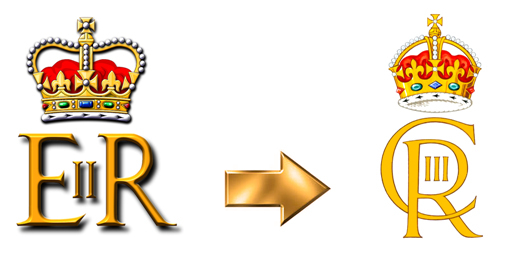 After the accession of Prince Charles to the throne of the United Kingdom, the process started to select an effigy of King Charles III in standing with the Canadian tradition of displaying the reigning British monarch on Canadian coins. You can read more about the process on the Royal Canadian Mint's web site. Click here to read their article. The design submitted by artist Steven Rosati was chosen and approved. You will note that on the right side of the obverse the text "D.G. Rex" is displayed (Rex is the Latin word for King, where Regina is the Latin word for Queen). Also, following a tradition that dates back to Charles II in the 17th century, each new monarch faces the opposite direction than their predecessor did. Because of this, the King's image faces to the left of the coins. |
|

